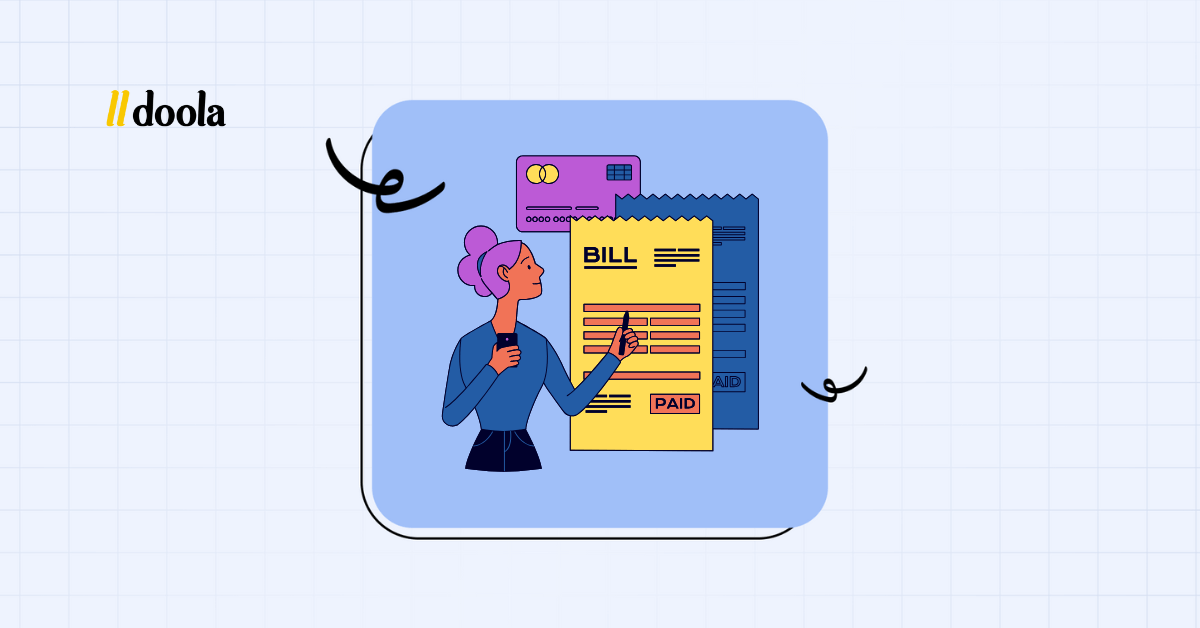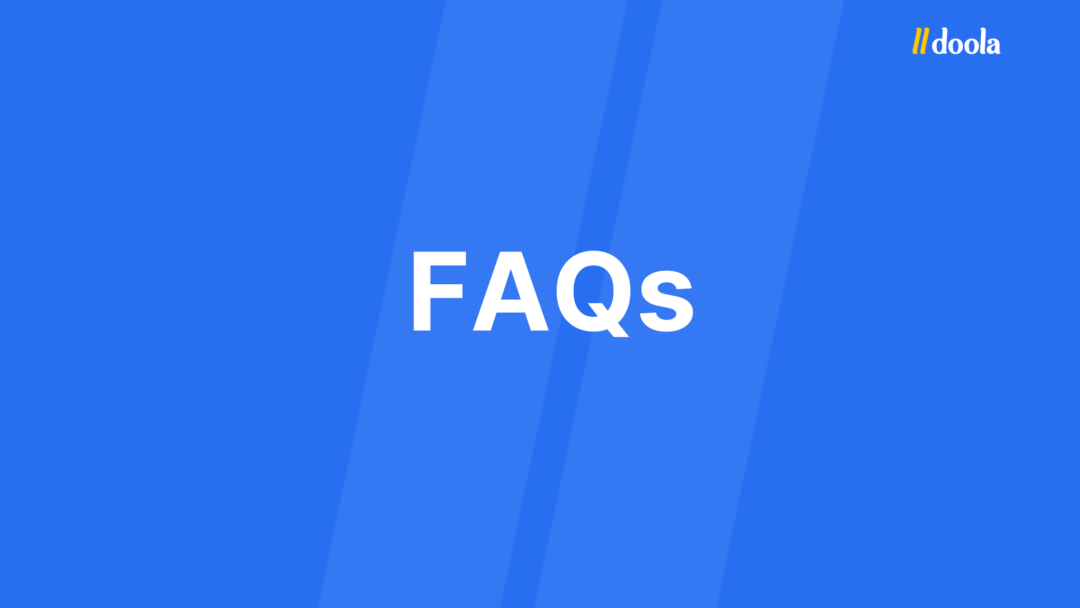
SG&A might just be the most misunderstood line item in your e-commerce business, and yet:
It could be eating up 20–40% of your revenue.
While COGS (Cost of Goods Sold) dominates most founders’ attention, Selling, General, and Administrative (SG&A) expenses can quietly creep up, and chip away at your profits.
Managed poorly, SG&A introduces the real inefficiencies, skewing financial insights, disrupting strategic planning, and undermining investor trust.
Without clarity of this key metric, you can’t benchmark, forecast, or make informed decisions.
But when you understand, track, and optimize your SG&A, you unlock real operational power.
In this guide, we’ll break down:
- What SG&A really means in the e-commerce space
- How to categorize expenses accurately (with real examples)
- The most common mistakes founders make
- How to reduce SG&A without sacrificing growth
- What a healthy SG&A benchmark looks like in 2025
- And how doola Bookkeeping helps you monitor, manage, and optimize it, automatically
If you’re ready to bring visibility to your SG&A and power up your profitability, sign up and see doola Bookkeeping in action. We help do’ers like you scale smarter!
What Is SG&A in E-Commerce?
SG&A stands for Selling, General, and Administrative expenses.
In the e-commerce world, this includes all operational expenses that support your business but aren’t directly tied to the product itself (i.e., not part of COGS).
If COGS is about what it takes to produce and fulfill your product, SG&A is about what it takes to sell and operate your business.
Breakdown of SG&A Categories With Real E-Commerce Examples
SG&A includes the essential expenses that keep your business running, your customers engaged, and your growth engine humming, without directly touching your product.
Here’s a categorized breakdown of SG&A expenses, complete with real-world e-commerce examples to help you classify your costs with confidence:
| Expense | Selling | General | Administrative |
| Facebook / Instagram Ads | ✅ | – | – |
| Shopify Transaction Fees | ✅ | – | – |
| Shipping to Customers | ✅ | – | – |
| Virtual Assistant (Support Role) | ✅ | ✅ | – |
| CEO / Founder Salary | – | ✅ | – |
| Zoom / Slack Subscriptions | – | – | ✅ |
| Legal / Contract Fees | – | – | ✅ |
| Tax Preparation Services | – | – | ✅ |
| Bookkeeping Tools like doola | – | – | ✅ |
| CRM / Project Management Tools | – | – | ✅ |
📌 doola Tip: Any expense that helps you run, market, or sell your business (but isn’t a part of the physical product or fulfillment) usually belongs in SG&A.
SG&A vs. COGS: Key Differences in E-Commerce Financials
Inaccurate classification of SG&A and COGS doesn’t just mess up your books, it can inflate your margins on paper, obscure inefficiencies, and send the wrong message to investors and financial partners.
Let’s now compare SG&A vs. COGS and clear up this confusion once and for all.
| Metric | COGS (Cost of Goods Sold) | SG&A (Selling, General & Administrative) |
| Definition | Direct costs involved in producing and delivering the goods. | Indirect costs incurred in selling and operating the business. |
| Examples | – Product manufacturing- Packaging materials- Fulfillment center fees (per order)- Freight shipping to warehouse | – Ad spend (Facebook, Google)- Founder and team salaries- SaaS tools- Bookkeeping and legal services |
| Financial Impact | Impacts Gross Profit (Revenue – COGS) | Impacts Operating Profit (Gross Profit – SG&A) |
Breaking It Down: What Goes Where?
Misclassifying SG&A as COGS can lead to the following challenges:
1. Overstate your gross profit: If you incorrectly log $10,000 of marketing spend as COGS instead of SG&A:
- Revenue = $150,000
- Incorrect COGS = $50,000 (should be $40,000)
- Gross Profit = $100,000 (should be $110,000)
That $10k misclassification makes your gross margin look 7% lower than it actually is. Now imagine explaining that to investors.
2. Undermine your operating margins: If your SG&A is too low on paper because expenses were misclassified into COGS, your operating margin looks artificially high, giving you a false sense of profitability.
You might keep spending assuming margins are healthy, when they’re not.
3. Confuse investors, partners, and your team: Sloppy categorization can raise eyebrows during:
- Due diligence from investors
- Loan applications
- Strategic partnerships
It shows poor financial hygiene and lack of operational control.
So, let’s now understand (with examples) why these differences are important.
✅ COGS: The Direct Cost of Selling a Product
These are costs that scale with each unit sold and are essential to delivering the physical product to the customer.
Examples & Use Cases:
- Manufacturing Cost per Unit: If it costs $8 to produce one unit of your skincare product and you sell 10,000 units, your COGS = $80,000.
- Packaging and Inserts: Custom boxes, thank-you cards, or bubble wrap that go inside every order, these are COGS.
- 3PL Fulfillment Fees: If your 3PL charges $2.50 per order to pick, pack, and ship, and you ship 4,000 orders this month, your COGS = 4,000 × $2.50 = $10,000.
- Inbound Freight to Warehouse: The cost to ship inventory from your manufacturer to your US fulfillment center.
✅ SG&A: The Cost of Running & Scaling the Business
These costs don’t scale directly with the number of units sold, but they’re necessary to sell, market, and manage your business.
Examples & Use Cases:
Ad Spend:
You ran $15,000 worth of Meta ads last month to drive top-of-funnel traffic. This is SG&A, not COGS, even though it drives sales.
CEO and Team Salaries:
Fixed monthly salaries for founders, operations managers, or customer service teams go here.
Tools & Subscriptions:
These can include Shopify ($39/month), Klaviyo ($150/month), and Asana ($100/month). All support business operations, not product delivery.
Professional Services:
✔️ Legal fees for a new LLC setup = SG&A
✔️ CPA filing your taxes = SG&A
✔️ doola Bookkeeping = SG&A (and a time-saver!)
If SG&A and COGS blur together, your financial picture becomes misleading, and potentially damaging.
| ⚡ doola Tip for Founders Your income statement should clearly separate: Revenue COGS Gross Profit SG&A Operating Profit |
doola Bookkeeping helps eliminate these classification errors entirely. With built-in logic for Shopify, Amazon, Stripe, and banking data, it auto-categorizes COGS vs. SG&A the right way, so your books are clean, investor-ready, and always accurate.
Why Accurate SG&A Tracking Is Crucial for E-Commerce Founders
SG&A may not feel as urgent as daily ad performance or inventory levels, but it shapes your profitability, investor appeal, and long-term viability.
Mismanaged SG&A won’t just hurt your bottom line, it can stall your momentum, scare off capital, and hide critical inefficiencies.
Here’s why SG&A is a driving factor for your strategy:
1. Budget Smarter: Know Where Every Dollar Goes
When you track SG&A accurately, you gain true visibility into how your capital is being deployed.
Instead of guessing where your cash is going each month, you can identify your biggest cost centers, like marketing, software, or admin salaries, and align them with ROI.
📌 Example: If you’re spending $12,000/month across SaaS tools, but only half are actively used, that’s $6,000 back in your pocket with “one audit” waiting to happen.
2. Improve Margins: Cut the Fluff, Not the Function
Tracking SG&A with precision ensures you’re not cutting what matters.
It enables you to target inefficient or non-essential spend while continuing to invest in areas that directly contribute to revenue and long-term scalability.
3. Get Investor-Ready: SG&A Is a Make-or-Break KPI
SG&A ratios tell investors how lean and scalable your operation really is.
A well-managed SG&A shows you’re building a disciplined business. An inflated one is a warning sign.
📌 Note: If your operating profit is low due to high SG&A, even with strong revenue, investors may still question your cost control and growth efficiency.
4. Spot Red Flags Early: Before They Spiral
SG&A bloat can creep in unnoticed, until it’s too late. With regular tracking, you can quickly spot trends like rising admin salaries, inflated ad budgets, or underperforming teams, and take action before it erodes your runway.
📌 Example: Let’s say your admin salaries increased by 18% last quarter, but revenue stayed flat. That’s a signal worth digging into before it becomes a long-term drag.
Case Study: How HNST Boosted Profitability by Trimming SG&A
The Honest Company (HNST), a high-growth direct‑to‑consumer (DTC) brand in personal care, was scaling rapidly. Yet investors and stakeholders started flagging their operating efficiency, especially around the SG&A costs.
What They Did:
- Strengthened Operational Discipline: HNST implemented tighter governance around internal functions, reviewing SaaS tool usage, marketing spend, and back‑office processes.
- Cut SG&A as a Percentage of Revenue: Through targeted optimization, they reduced SG&A expense margins by 130 basis points (1.3%). That led to significant cost savings.
- Streamlined Marketing and Promotions: By refining pricing strategies and improving promotion efficiency, they increased gross margins by ~900 bps (9 percentage points), which further amplified operating profit once combined with SG&A reductions.
Results:
- Gross Margin Rises: Bulk improvements in supply chain and pricing strategies pushed gross margin to 38.2%.
- SG&A Efficiency Boosted: Lower SG&A margins helped drive healthier operating leverage across the business.
- EBITDA Gained: They achieved $26 million in EBITDA, supported by a strong balance sheet (~$75M cash reserves, zero debt).
If you’re scaling a similar DTC or e‑commerce brand, this is the playbook to watch: audit SG&A, cut waste, not growth, and translate operational clarity into real profit.
The Due Diligence Lens: SG&A as a Trust Signal
Planning to raise capital or prepare for acquisition?
Your SG&A will be heavily scrutinized. Investors and acquirers view SG&A as a reflection of operational discipline. Inflated, messy, or misclassified SG&A statements can cast doubt on your leadership and financial hygiene.
Well-categorized SG&A isn’t just for internal ops, it builds credibility with external stakeholders.
With tools like doola Bookkeeping, keeping SG&A in check is no longer a manual, messy task; it’s automatic, accurate, and seamless.
How to Categorize SG&A Expenses Properly in Your E-Commerce Business
SG&A costs have a major say in your company’s financial health and these expenses are where operational discipline pays off.
As a first step, build a clear, consistent framework for tracking them. That starts with your Chart of Accounts.
Let’s outline some of the best practices for SG&A categorization:
1. Customize Your Chart of Accounts (COA)
Tailor your COA to reflect your business operations. For example:
- Ad Spend: Facebook Ads, Google PPC, influencer partnerships.
- SaaS Tools: Email platforms (e.g., Klaviyo @ $250/month), CRM software (e.g., HubSpot @ $600/month).
- Customer Service VAs: Offshore team salaries (e.g., 3 VAs @ $700/month = $2,100/month).
- Founders & Executive Salaries: Separate from operations staff, as they reflect strategic vs. functional costs.
A customized COA not only clarifies spend, it helps you budget, benchmark, and audit with precision.
2. Decide on Gray Areas in Advance
Some expenses blur the lines. Make consistent rules to avoid confusion later. Let’s consider the following examples:
- A web developer maintaining your Shopify theme falls under the SG&A category.
- A custom app builder working on proprietary features to improve checkout flow? That’s closer to R&D or COGS.
- A content creator making product reels? That’s SG&A (under marketing).
This consistency helps during audits, reporting, and tax time.
3. Fix Classification Mistakes Promptly
Let’s say your $3,000/month customer support software accidentally gets logged under “Cost of Goods Sold” for 3 months.
That’s $9,000 of misrepresented spend, potentially skewing your gross margin by several percentage points.
Fixing these promptly ensures:
- Accurate profitability analysis
- Cleaner books for investors or potential buyers
- Smarter future budgeting
4. Use Smart Bookkeeping Tools That Catch Errors Automatically
Manual categorization leaves room for human error. Tools like doola Bookkeeping:
- Auto-sync with Shopify, Stripe, and Amazon
- Auto-categorize SG&A vs. COGS using intelligent rules
- Flag outliers or misclassifications (e.g., a sudden 5x jump in SaaS spend)
Want to see doola Bookkeeping in action? Sign up today.
5 Strategies to Reduce E-Commerce SG&A (Without Slashing Growth)
In e-commerce, your margins are often razor-thin, so reducing SG&A expenses isn’t just about going lean.
Instead, strategic SG&A optimization can unlock capital for product innovation, better fulfillment, and smarter marketing.
You don’t need to slash costs, you need to spend smarter.
Let’s explore how to tighten up your SG&A without compromising momentum.
1. Automate It All: Turn Manual Overhead into Margin
Let’s consider two use case scenarios to break this down.
Use Case 1: Customer Support
- Instead of scaling your support team 1:1 with order volume, implement AI-powered chatbots like Zendesk AI or Gorgias.
- Add self-service FAQ flows for common issues like “Where’s my order?” or “How do I return an item?”
Manual tasks eat up time and budget, automation frees both.
The table below breaks down your potential savings:
| Item | Traditional Support Rep | AI Chatbot | Monthly Savings | Annual Savings |
| Cost per Month | $3,000 | $199 | $2,801 | $33,612 |
| Support Tickets Handled | ~1,000 | ~800–1,200 (varies by complexity) | Comparable volume | – |
| Coverage | 8 hrs/day, Mon–Fri | 24/7 availability | Increased coverage | – |
| Scalability | 1 rep = fixed capacity | Handles multiple chats simultaneously | Operational efficiency | – |
| Training & Onboarding | 2–4 weeks + costs | Plug-and-play with minor setup | Reduced ramp-up time | – |
Even replacing just one human support rep with a smart chatbot can save your business over $33,000 per year.
That’s just one line item, imagine the compounding impact when you combine this with strategic outsourcing, tech consolidation, and better vendor negotiations.
Use Case 2: Inventory and Order Management
- Use platforms like Extensiv or ShipBob’s automation features to streamline inventory reconciliation and order syncing.
- Impact: Reduces the need for manual updates, inventory errors, and admin bottlenecks, freeing your team to focus on growth initiatives.
2. Outsource & Scale Smart Without Long-Term Payroll Overload
Outsourcing lets you access skilled global talent for operational and repetitive tasks, without the overhead of benefits, onboarding, or long-term contracts.
List of Tasks You Can Easily Outsource:
- Product Listing Uploads: Freelancers or virtual assistants (VAs) can handle SKU creation, product descriptions, image uploads, and metadata tagging. Especially useful when you’re expanding product lines or selling on multiple platforms.
- Order Tracking & Customer Follow-Ups: Delegate customer service touchpoints like “Where’s my order?” emails or delayed shipment responses to remote support teams or AI-assisted VAs, freeing up hours every week.
- Data Cleanup & Maintenance: Whether it’s scrubbing customer databases, normalizing supplier data, or cleaning up old sales reports, outsourced pros can do the job fast and keep your ops tidy without diverting internal focus.
- Ad Account & Performance Reporting: Instead of drowning in dashboards, hire a freelance media analyst to pull weekly ROAS, CTR, and CAC reports from Meta, Google, or TikTok ads, keeping you informed while you focus on strategy.
Example: Instead of hiring a full-time operations associate at $4,000/month, if you outsource to a virtual assistant at $800/month for the same output, you can potentially save up to $38,400 yearly.
📌 Pro tip: Use platforms like Upwork or Toptal to vet specialists, or set up dedicated SOPs for VAs using tools like Notion or Loom.
3. Consolidate Your Tech Stack: Fewer Tools, More Efficiency
If you’re using one tool for email, another for SMS, a separate analytics dashboard, and yet another for social scheduling, it’s time to consolidate.
Example: A founder using 5 separate tools for CRM, email, SMS, analytics, and reviews often ends up paying:
- $99 (Klaviyo)
- $49 (SMSBump)
- $39 (Google Looker Studio add-ons)
- $79 (Later for social scheduling)
- $79 (Stamped for reviews)
That’s $345/month or $4,140/year.
Switching to a platform like Omnisend or HubSpot Starter bundles all features at $99/month, saving $3,000+ annually, while simplifying team workflows.
4. Renegotiate Smarter: Let Your Data Do the Talking
When your numbers speak, vendors are ready to recalibrate. A well-organized bookkeeping dashboard gives you the power to showcase purchasing volume, usage trends, and growth.
Vendors respond to leverage, especially when you bring data to the table.
So start using your bookkeeping dashboard not just for tracking, but as a tool for commanding better deals.
Where to Renegotiate:
- Fulfillment contracts: Use increased shipping volume to justify lower per-unit costs or better service-level agreements.
- Ad rates: Present historical performance metrics to negotiate lower CPMs or shift toward outcome-based pricing.
- SaaS subscriptions: Ensure 10–20% savings by switching to annual billing on high-use tools or exploring usage-based pricing models.
5. Optimize Marketing Spend with Real Metrics
Start treating your bookkeeping dashboard as a growth command center. Because with the right metrics in hand, you can double down on what’s working and trim what’s not.
Slashing ad budgets without insight isn’t strategy, it’s guesswork.
Monitor key performance indicators like:
- CAC (Customer Acquisition Cost): Understand exactly how much you’re paying to win a customer.
- LTV (Customer Lifetime Value): See how much each customer brings in over time, critical for scaling sustainably.
- ROAS (Return on Ad Spend): Track the true ROI of every campaign and optimize accordingly.
Your bookkeeping dashboard, when paired with campaign performance metrics, helps answer questions like:
| ✔️ Which campaigns are actually driving profitable growth?
✔️ Where is my customer acquisition cost creeping up without enough return? ✔️ Is my ROAS strong enough to justify continued investment? |
📌 Bonus Tip: Set up monthly reviews using your bookkeeping platform and ad dashboards to guide strategy shifts in real time.
The SG&A Transformation in Action: Before vs. After
Let’s consider an e-commerce brand making $425,000/month in revenue.
Before applying the above strategies, they were spending heavily across customer support, software tools, full-time staff, and fulfillment contracts.
Want to see how your SG&A compares and how much you could save?
Explore doola Bookkeeping for crystal-clear financial reports, dashboards that reveal real cost drivers, and expert insights to grow lean and profitably.
SG&A Benchmarks in E-Commerce: What’s Normal in 2025?
Selling more is great, but if your SG&A is growing faster than your revenue, you’re heading for a cash flow crunch.
In 2025, investors and acquirers are laser-focused on operational efficiency. That means understanding how your SG&A stacks up against industry norms.
Here’s how SG&A typically compares across different e-commerce business models:
| Business Model | Typical SG&A % of Revenue | Context & Considerations |
| Mature DTC Brand | 15-25% | Leaner operations, optimized ad spend, and scaled infrastructure help keep SG&A in check. High efficiency is key to sustained profitability. |
| Aggressive Startup | 30–50% | High burn is common due to team buildout, brand positioning, and heavy CAC. But SG&A must normalize over time to improve investor appeal and runway. |
| Dropshipping | 25-35% | With lower margins and higher ad dependency, SG&A tends to stay elevated. Cost control and automation are critical to prevent overspend. |
| Private Label, Inventory | 18-28% | SG&A sits between startup and mature DTC levels. Inventory handling, warehousing, and fulfillment add layers of cost, but can be optimized with scale. |
Watch Out For These Warning Signs
- SG&A rising for 2+ consecutive quarters without a corresponding revenue lift = Potential signal of operational inefficiencies or runaway spending.
- Founder salaries + SaaS subscriptions ballooning = Time to audit your overheads and renegotiate or eliminate non-essential tools and costs.
- No clear categorization of SG&A expenses = If you’re lumping everything into “admin” or “operations,” you’re flying blind.
It’s perfectly normal for early-stage e-commerce brands to run “hot” on SG&A, especially when investing in growth. But if expenses don’t tighten as your revenue scales, your gross margins will shrink and your path to profitability gets longer (and steeper).
⚡ doola Tip: Use your bookkeeping platform to track SG&A trends monthly, broken down by category. Pair that with operational metrics to catch red flags early and steer your business back on course.
How doola Bookkeeping Helps You Track & Optimize SG&A
Manually handling SG&A for a fast-growing e-commerce business is tedious. That’s where doola Bookkeeping steps in to automate and optimize.
Here are the offerings you get with doola:
- Automated SG&A categorization synced with platforms like Shopify, Amazon, Stripe, and your bank
- Real-time alerts when ad spend, SaaS tools, or admin costs spike unexpectedly
- Clear, investor-ready financial reports, necessary for tax season, funding rounds, or quarterly reviews
- Support for global founders running US businesses, no matter where you’re based
- Expert insights to help you spot leaks, plug inefficiencies, and protect your margins
Whether you’re a lean startup or a scaling DTC brand, dialing in your SG&A isn’t optional; it’s how you boost profitability, attract investors, and build a business that lasts.
With doola by your side, you’re not just tracking expenses, you’re building a strategic engine for growth.
Ready to get your SG&A under control? Sign up now and let us help you scale with strategy.
FAQs

What expenses count as SG&A in an e-commerce business?
Anything not directly tied to the production or fulfillment of your product: ads, SaaS tools, admin salaries, legal fees, and more.
Should marketing costs be categorized under SG&A or COGS?
Marketing (like Facebook/Google ads) typically falls under SG&A, not COGS.
How often should I review my SG&A expenses?
Monthly, but quarterly at minimum. The earlier you catch inefficiencies, the better.
Can I reduce SG&A without affecting customer experience?
You can. Smart automation, outsourcing, and tool consolidation can lower spend and improve service.
What’s a healthy SG&A to revenue ratio for my business?
Depends on your stage. Startups may sit at 30–50%. Mature businesses should aim for 15–25%.
How does doola Bookkeeping automate SG&A tracking?
It syncs with your platforms, auto-categorizes transactions, flags anomalies, and generates ready-to-review reports.
Can SG&A be tax-deductible for a US LLC or Corporation?
Yes. Many SG&A expenses are deductible: bookkeeping, ads, salaries, legal fees, etc. Just keep them categorized clearly.










